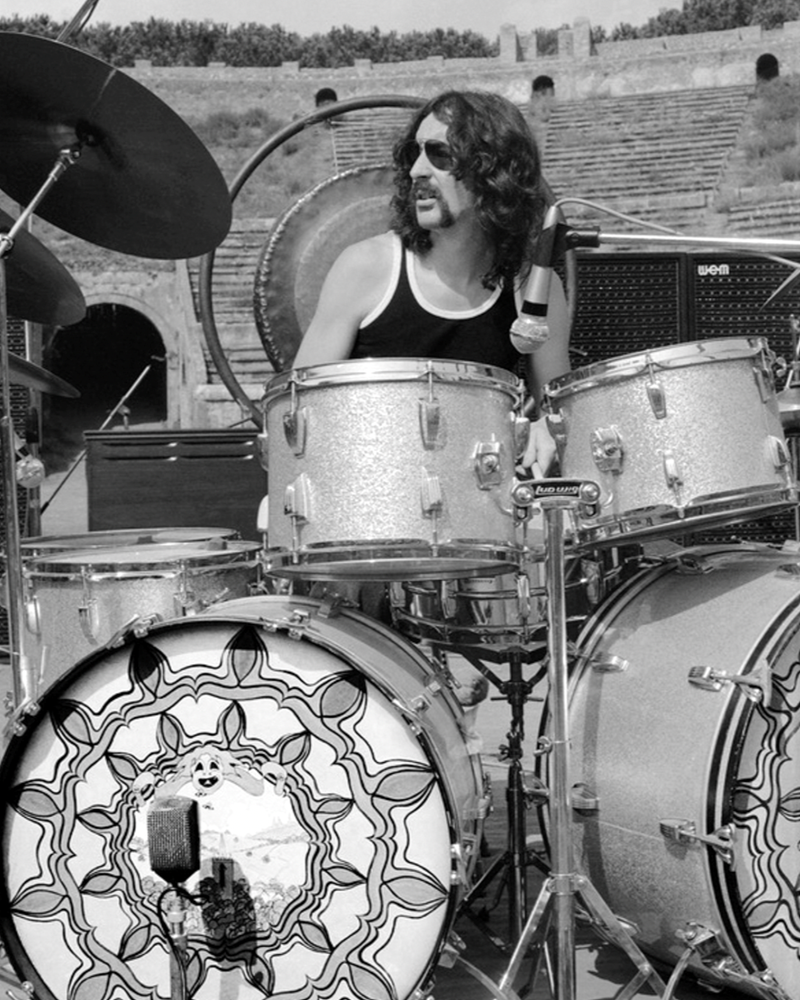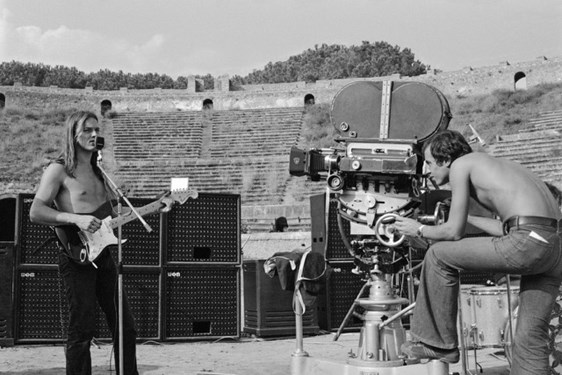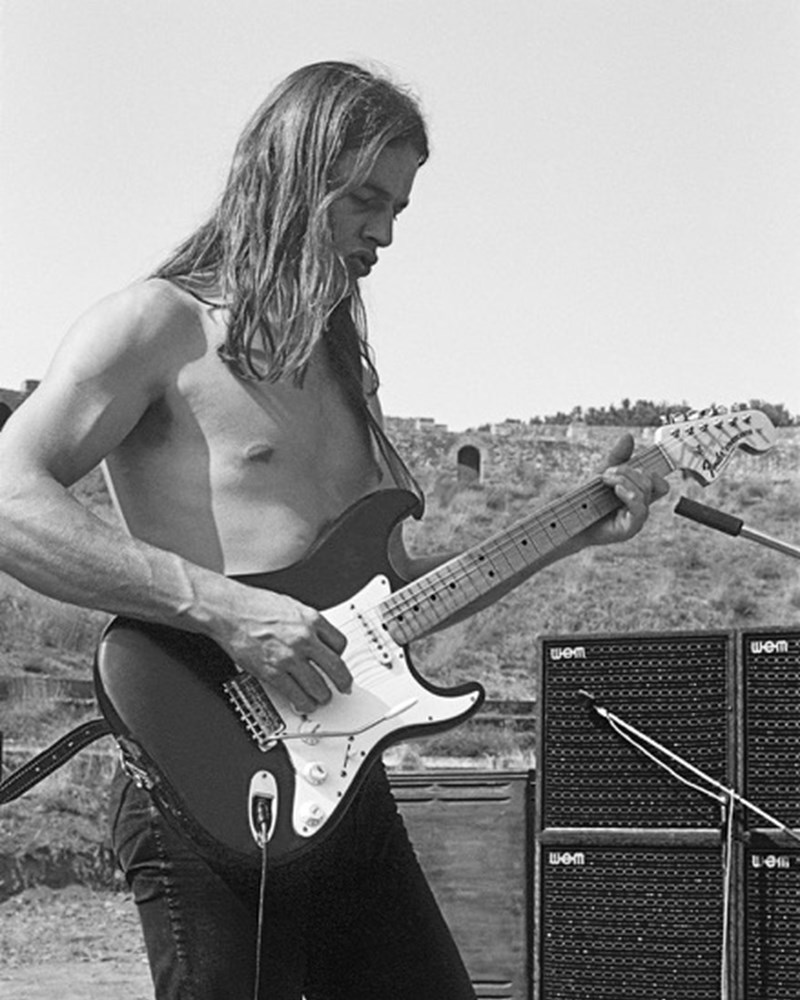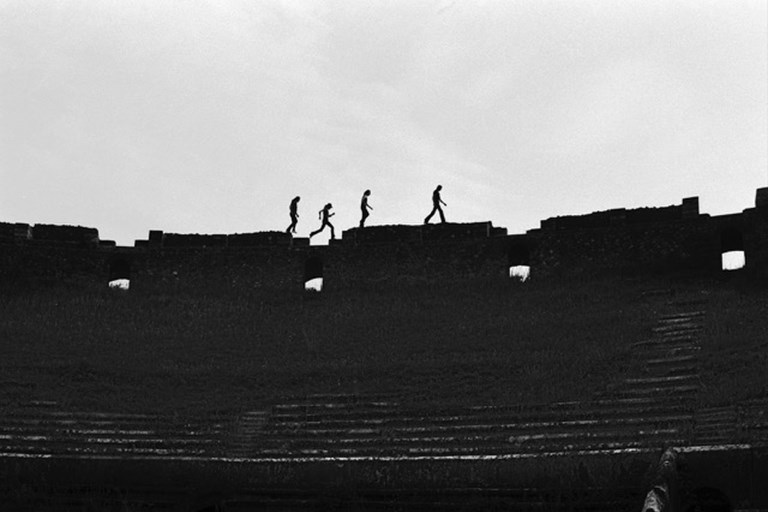PINK FLOYD IN POMPEII, 50 YEARS ON
08.10.2021 NAPLES & AROUND
Not only was the location out of the ordinary – so was the fact that there was no audience. Or at least, there wasn’t supposed to be any audience. More of this later…
The concert was the brainchild of film director Adrian Maben, a Paris-based Englishman who loved Pink Floyd’s music and had approached them to make a concert film which would be more than just a simple ‘concert film’. Maben’s aim was to make a true art movie that did justice to the group’s avant-garde sound, a kind of “Anti Woodstock”. The band was sceptical, but their manager, Steve O’Rourke, offered Maben one ray of hope: “If you find us an interesting enough venue”, he told Maben, “we might reconsider”.
Fast forward a few months to May 1971 to find Maben backpacking his way down through Italy with his girlfriend. Soon after a visit to the ruins of Pompeii, Maben realized he no longer had his passport with him. While his partner went back to the hotel, the young director managed to persuade one of the guards of the archaeological area to let him back inside after hours so he could search for the missing document, which he was sure he had dropped somewhere. He retraced his steps to the Roman amphitheatre, arriving just as the sun was setting. Alone in what had been the Superbowl of a city that came to an abrupt end one day in 79 AD, Maben remembers that he was “filled with wonder and a vague sense of disquiet” as he surveyed the scene, to a soundtrack of chirping crickets and squeaking bats, which reverberated eerily in this huge echo chamber.
Maben suddenly realized that this was the place he had been looking for. He never found his passport – but he had the venue that would make Pink Floyd reconsider. They did, excited by the director’s idea of what he thought of as “a concert that would have no need of an audience, because the audience would be the setting itself, these relics of the past”. At a time when we’ve grown used to music videos filmed in stunning historical locations – Beyoncé and Jay Z in the Louvre being just one example – this might not seem so exceptional. But in 1971, nothing of this kind had ever been attempted.

Miraculously, thanks to a word put in by a respected professor at the University of Naples who also happened to be a Floyd fan, Maben managed to persuade the Italian heritage department that oversaw Pompeii and the other archaeological sites of the Bay of Naples to agree to the idea. They gave the band and crew full use of the amphitheatre for six days, and after production funds were secured, it was decided that the shoot would take place in early October.
Production was plagued by problems, not least the lack of sufficient electrical power anywhere inside the archaeological site. This was finally resolved by stretching a cable over a mile from the modern town of Pompeii to the filming venue. The tight budget meant that Maben was unable to extend the shoot over the whole six days that had been set aside: in the end, the ‘concert in the amphitheatre’ was filmed over just three days, from 3 to 6 October, with a final morning set aside on 7 October to grab some insert footage of the band on the slopes of Vesuvius. To make up the shortfall of what it was soon clear was not enough raw material for a feature-length film, further songs were later shot by Maben in a Paris recording studio. Even with this additional footage, the original cut of Pink Floyd: Live in Pompeii, which premiered at the Edinburgh Film Festival in September 1972, was just an hour long. Later footage shot at Abbey Road Studios in London allowed the director to create an 80-minute version which was given a commercial release in selected territories in late 1973 and 1974.

View
The film was only a partial success at the time, mostly due to bad timing: by the time it came out, the tracks from the albums Meddle and A Saucerful of Secrets that made up most of the ten songs in the extended version were sounding like ‘old Floyd’. Dark Side of the Moon had been released to huge acclaim in March 1973, and would go on to become one of the best-selling albums of all time – yet only three Moon tracks, all shot in the studio, made it into the film.
But there is a local side to this tale which we who live in the Campania region of Italy find particularly heartwarming. It’s the story of the so-called ragazzi degli scavi.

It’s not strictly true that there was no audience in Pompeii’s Roman amphitheatre on those three days in October 1971. Outside of the scavi, or archaeological site, Pompeii is a big, sprawling modern town. Word had gone around that something quite strange and special was happening inside the ruined city. With their long hair – still an unusual sight in southern Italy back then – Pink Floyd had not gone unnoticed, though few of the local youth knew their music. The band even stopped off in a local Catholic youth club one evening and ended up playing a few games of ping pong with those present. So some of the more adventurous and daring of the kids decided they would go and investigate.
Back then, Pompeii’s perimeter wall was not too difficult to jump over – in fact, spending a few hours inside the scavi of an evening avoiding the security guards was something of a local sport. Getting in when the few guards present were busy keeping an eye on the film crew was a piece of cake. Alfredo Contaldo, Antonio Malafronte, Raffaele Giordano, Silvestro Sorrentino, Matteo Apuzzo, Giuseppe Acanfora – these were just some of the ragazzi who decided to skip school and watch at least part of the three-day shoot peeping out from behind the arches of the arena. They didn’t go unobserved, and were chased away more than once. But they always returned, and in the end the production team allowed them to stay, as long as they were quiet and stayed out of camera range during shooting. At one point, while technicians were repairing a broken light, a few of them were even invited by David Gilmour to play an impromptu game of frisbee with the band.
In their late sixties today, some of the ragazzi degli scavi were able to share their memories years later with Adrian Maben when the director was awarded honorary citizenship of Pompeii in 2015. In particular, they never forgot the nighttime recording of the track One of These Days, which featured Roger Waters’ driving, mesmeric bassline. “The arena was stunningly beautiful that evening, all lit up”, Alfredo Contaldo told journalists. “It was something even we locals had never seen before. The effect was made even more special by the play of shadows over the amphitheatre and the dust that was whipped up by the wind”.

Here at Le Sirenuse, we have our own, more modest Pink Floyd claim to fame. The band stayed at the hotel for a few nights in May 1989 when they played two stadium concerts in nearby Cava de’ Tirreni during their ‘Another Lapse’ tour. Le Sirenuse’s maître, Vincenzo Galani, who has been with the hotel for more than forty years, can still point out the Pink Floyd table on the terrace. He recalls that “One of the group – not David Gilmour, one of the others – used to come down to breakfast at 7am, order a big mug of caffè americano, and just sit there for hours, staring at the sea. Who knows what he was thinking? He must have been gathering inspiration”.
Photos © Jacques Boumendil
Le Sirenuse Newsletter
Stay up to date
Sign up to our newsletter for regular updates on Amalfi Coast stories, events, recipes and glorious sunsets


